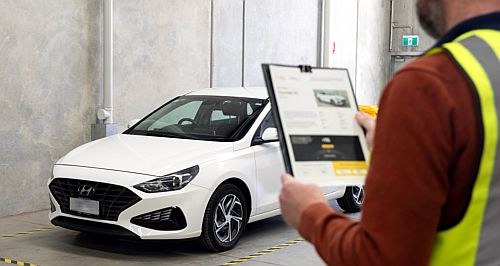Make / Model Search
News - General NewsTest program emissions shockReal-World Testing Program highlights discrepancies in fuel use, emissions figures14 Aug 2024 By MATT BROGAN ONE YEAR into its Real-World Testing Program, the Australian Automobile Association (AAA) has found that vehicles tested consumed up to 31 per cent more fuel in real-world conditions than manufacturers claimed in mandatory laboratory tests.
Furthermore, 21 of the 58 vehicles tested produced on-road emissions that exceeded current or upcoming Australian regulatory limits.
“We can now say with confidence that while some vehicles produce fuel consumption and emissions in line with lab tests reported by carmakers, many do not,” said AAA managing director Michael Bradley.
“That can have a real impact on consumers and fleet buyers. If people rely on lab tests, they could end up with a car that costs more to run or is dirtier than they expected.
“The results raise a question for regulators about whether car dealerships should be required to reveal real-world testing results to consumers at point of sale.”
Funded by the Commonwealth, the $14 million, four-year Real-World Testing Program (RWTP) was created in response to the 2015 Volkswagen ‘Dieselgate’ emissions scandal, which showed that emissions regulations around the world were incentivising carmakers to optimise their vehicles’ fuel consumption and emissions performance for laboratory tests.
The AAA says the RWTP has now evaluated enough vehicles to determine that many over promise and under deliver.
“If you are buying a small car, for example, we have now tested eight small car models from different manufacturers, giving consumers a chance to understand real-world fuel consumption and emissions before they buy,” added Mr Bradley.
“We also now have multiple vehicle results across a range of vehicle classes, including small, medium, and large SUVs, as well as utes.
“Real-World Testing will drive down demand for models that over promise and under deliver, while improving affordability for Australians and cleaning up our light vehicle fleet.
“Our program is also providing important data for governments as they place increasing focus on greenwashing and measures to encourage the take-up of electric vehicles.”
The latest round of RWTP results showed 15 vehicles across a range of classes consumed as much as seven per cent more fuel than reported in lab testing, while five consumed less fuel on the road than in the lab (see abbreviated results below).
It also found that although four diesel-powered vehicles recorded real-world fuel consumption rates close to advertised results, all four produced noxious emissions above the mandated lab-test limits.
The four-year RWT program will test up to 200 vehicles on roads in and around Geelong, Victoria, under controlled conditions to ensure fuel consumption and emissions results are repeatable and minimise human factors such as driving style and changing traffic flows.
The full list of test results from the 58 vehicles assessed to date are available here.
Small SUVs:
Medium SUVs:
Large SUVs:
Utes:
 Read more6th of August 2024  Cooling demand prompts EV rethinkGerman luxury brands, suppliers change tack amid cooling EV demand2nd of August 2024  Australia called to match EU tyre use standardsMonash University says EU standards a good start, diesel to be made from scrap tyres23rd of July 2024  Stellantis fuel economy debt mountsUS civil penalties of $190.7m revealed, Stellantis still owes $459.7m to govt12th of July 2024  Californian rule change may derail hydrogen ICEsUS state to oppose ‘hot hydrogen’ tech, threatens carbon-free route for many OEMs |
Click to shareGeneral News articlesResearch General News Motor industry news |











Facebook Twitter Instagram